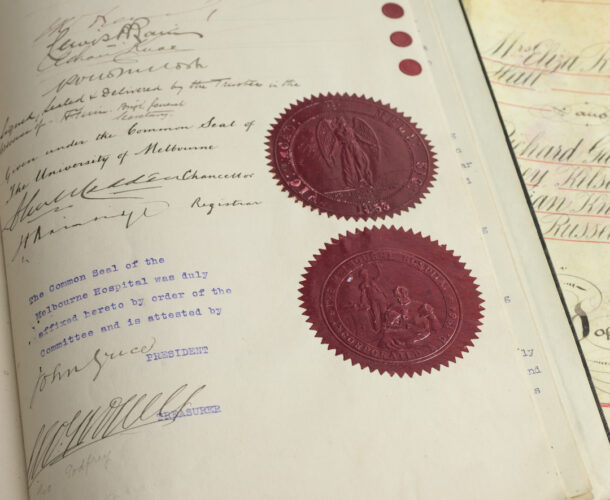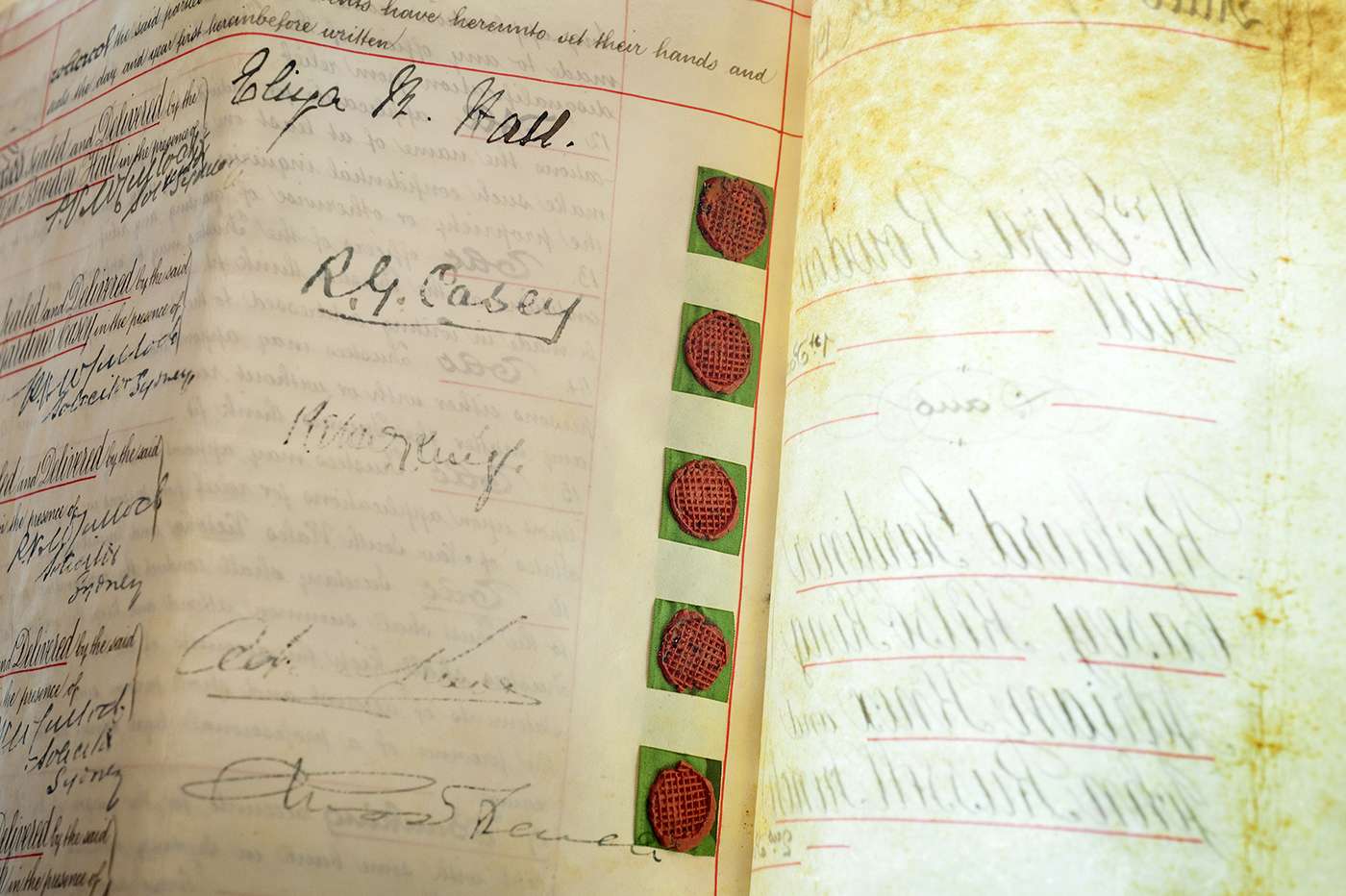The plan to establish a medical research institute is agreed by three parties – the Walter and Eliza Hall Trust, the Melbourne Hospital, and the University of Melbourne. The Walter and Eliza Hall Institute of Research in Pathology and Medicine is born.
Ambitions and collaboration define the institute
In the history Professor Macfarlane Burnet wrote of the first 50 years of the Walter and Eliza Hall Institute1, he credits three men with its genesis.
In Burnet’s analysis the late business magnate Walter Hall provided the capital; his longtime friend and trusted associate Richard Gardiner Casey supplied the vision; and the Dean of Medicine at the University of Melbourne, Sir Harry Brookes Allen, was the instrument guiding the institute’s execution and enduring foundations.
While this scenario overlooks the part of Walter Hall’s widow Eliza – and a later history lays out evidence that she likely had a defining role in initiating the charitable trust2 that founded the institute – it’s clear that the ambitions and collusion of Casey and Allen defined the facility that endures today.
They formed an unlikely and not always happy alliance.
Richard Casey, a businessman of excellence and honour
Casey (1846-1919) was the son of a Brighton doctor, and was a colourful former jackeroo, miner, pastoralist and politician, gregarious and tenacious, who after years of sweat and struggle eventually acquired a fortune out of land and mining. He had a bon vivant’s appreciation of the finer things, and a reputation as a businessman of excellence and honour (his son, Lord Casey, was a Gallipoli veteran, politician and diplomat who served as Governor-General of Australia from 1965-69).
For decades Casey enjoyed a close association with Walter Hall, 20 years his senior, sharing company directorships and a passion for horseflesh and racing. It’s likely Casey got to know Walter through his friendship with his younger brother TS Hall, and was executor to both brothers’ fortunes. After Walter’s death Casey remained a trusted advisor and friend to Eliza Hall until her death in 1916.
Harry Allen, a distinguished pathologist and administrator
Allen (1854-1926) was the son of a Geelong boot maker, and was a commanding, sober character with a formidable intellect, an untiring devotion to medicine, pathology and public health, and a consummate if dictatorial administrator.
He reigned as a force over the Melbourne medical school and the city’s wider medical establishment for more than 30 years. Indeed, he instructed student Burnet in pathology in 1920. By then “to us he seemed a very old man who lectured in a dull monotone but who could still be interesting as he demonstrated specimens”.
Though Allen had distinguished himself as a pathologist in his early career, and was sent to England to further his studies, on reviewing Allen’s archive Burnet concluded that he was “not a scientist in any modern sense … In his view, for instance, all chronic disease should be regarded as due to syphilis until proved to be something else”.
Establishing a medical research institute
It was when Allen was at the height of his administrative powers that he and Casey crossed paths in late 1914. Casey was by then chairman of the Sydney-based Walter and Eliza Hall Trust, Australia’s richest philanthropic fund, established with a £1 million donation and great fanfare two years earlier as a “perpetual gift to the poor”.
Though there has been some dispute about who first advanced the idea of the trust underwriting a medical research institute. Although some accounts credit Allen, Burnet’s investigation concluded that Casey most likely provided the seed, with Allen quickly acting to determine its shape and ambitions. Historian Kay Fraser concluded the same when she researched the trust’s history for its 2012 centenary.
It appears that Casey made an initial approach to the University of Melbourne indicating the potential for a donation. A meeting was arranged for 28 December 1914. Allen came to the table with proposals for endowments to support clinical professorships, but when Casey turned up at the meeting with a draft proposal for an institute of research focusing on cancer, Allen “adjusted quickly to the situation”, encouraging a facility with broader ambit and connected to the then new Melbourne Hospital (today’s Royal Melbourne Hospital).
Burnet credits Allen’s initiative with turning around “the dull provincialism of the scientific and medical scene in Australia before World War I” and put it on course to its “present vigour”.
Not all smooth sailing
But it was not all smooth sailing in those formative moments. Allen was lobbying and pushing hard to ensure the institute fitted the model he envisaged. Meanwhile Casey was pushing back, guarding ownership of what he described as his “pet scheme”. “It is clear that Casey was irritated by the way that those who paid the piper” were being marginalized from some key areas of control, wrote Burnet, and “in one unguarded moment, put on paper that he had been ‘trapped’ by Allen”.
But by April 1915 the agreement to establish the Walter and Eliza Hall Institute of Research in Pathology and Medicine is signed by the Walter and Eliza Hall Trust, the Melbourne Hospital, and the University of Melbourne.





